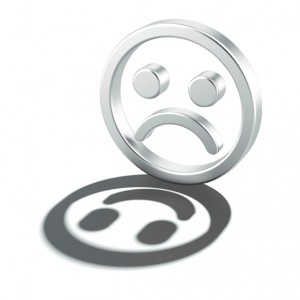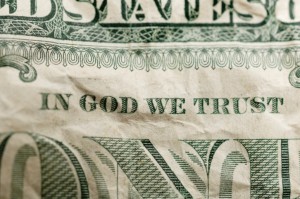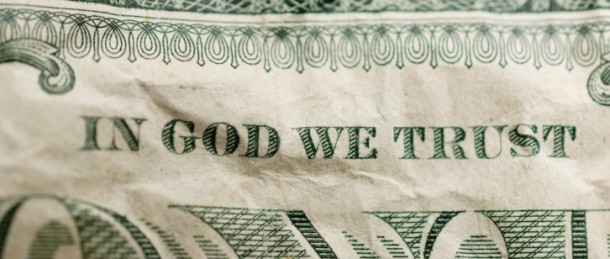Our Emotional Attachment to Currency
 Apparently our emotional attachment to physical currency is of the same magnitude and importance to us as religion and personal intimacy. Not surprisingly, this is something credit card companies have known for a long time and have reportedly continued difficulty combating. However, this was news to me and I was surprised to learn about it during a recent informal group discussion amongst payments professionals. Yet the more I thought about it, the more I realized that having some cash in my pocket contributes positively to my emotional sense of well-being. I realize this sounds awfully esoteric, but the simple assurance that I can buy a coffee, or a sandwich and perhaps tip the server without the hassle of a card transaction is comforting. Simply stated, I can pay quickly, virtually effortlessly and move on quickly with only the simple exchange of some paper (or plastic here in Canada) and a few bits of metal.
Apparently our emotional attachment to physical currency is of the same magnitude and importance to us as religion and personal intimacy. Not surprisingly, this is something credit card companies have known for a long time and have reportedly continued difficulty combating. However, this was news to me and I was surprised to learn about it during a recent informal group discussion amongst payments professionals. Yet the more I thought about it, the more I realized that having some cash in my pocket contributes positively to my emotional sense of well-being. I realize this sounds awfully esoteric, but the simple assurance that I can buy a coffee, or a sandwich and perhaps tip the server without the hassle of a card transaction is comforting. Simply stated, I can pay quickly, virtually effortlessly and move on quickly with only the simple exchange of some paper (or plastic here in Canada) and a few bits of metal.
 If our emotional attachment to physical currency is so strong, is it any wonder that circulated money continues to grow. The challenge to replace cash altogether goes far beyond finding ubiquitous alternatives that are available to every human and confronts head-on the resistance humans have when a strong emotional bond is threatened. Indeed, I believe this emotional attachment is at the root of the US Government’s inability to end the public’s addiction to their $1 note.
If our emotional attachment to physical currency is so strong, is it any wonder that circulated money continues to grow. The challenge to replace cash altogether goes far beyond finding ubiquitous alternatives that are available to every human and confronts head-on the resistance humans have when a strong emotional bond is threatened. Indeed, I believe this emotional attachment is at the root of the US Government’s inability to end the public’s addiction to their $1 note.
All this attachment to an ever increasing pool of available hard currency begs the obvious question – what are we doing with it? As for my personal comfort level in having some cash in my pocket, it is used for small, quick purchases where convenience and speed are a priority. Yes, cash fuels the underground and criminal economies, but as many experts point out, if you remove cash as a payment choice, these economies will very quickly find an alternative payment method, such is their insidious nature throughout all cultures around the world. A recently released report, Global ATM market and Forecasts to 2019, focuses on how ATM usage and cash withdrawals increased globally in 2013.
Cash Withdrawals Increase
According to a Point of Sale Newsarticle on the report, cash withdrawals at ATMs around the world were up 9 percent over 2012 numbers. Roughly 87 billion cash withdrawals occurred worldwide in 2013 compared to 80.8 billion made in 2012. In addition, the amount of cash withdrawn increased by 1 percent to $13.4 trillion for 2013.
An APG Cash Drawer white paper “Cash Management Solutions: The Emerging Opportunity for POS Dealers†states cash transactions amount to about 40 percent of all sales — with many of these transactions for amounts less than $10. Also, a 2012 Intuit study found 55 percent of U.S. small businesses don’t accept credit cards.
I believe we all accept the usefulness of cash for small payments. What then can be said for denominations of higher value, like the US $100 for instance? Would it surprise you as it did me, to learn that approximately 80% of all US currency in circulation are $100 notes? As reported a story recently in Quartz, it was found by the researchers that the percentage of U.S. currency printed as $100 bills has steadily increased over the past 40 years. It is accepted that a large amount of those $100 notes circulate outside of the US. So, what is done with the $100 note at home? Key findings from the US Federal Reserve’s 2012 Diary of Consumer Payment Choice (DCPC) include:
- More than one in five U.S. consumers carries more than $100 in cash in his or her pocket, purse, or wallet, and the more cash the consumer carries the more likely he or she is to carry $100 bills. Consumers may have $100 bills stored on their property as well, but data are not available on this aspect of consumer cash use
- People who carry $100 bills tend to hold them for a while. On any given day, between 75 percent and 80 percent of respondents to the 2012 DCPC who carried a $100 bill held on to it. There does not appear to be evidence that consumers try to get rid of $100 bills
- By number of transactions, consumers with $100 bills do not make relatively more payments in cash than consumers with more than $100 in mixed bills, as reported in the 2012 DCPC. Thus, $100 bills do not appear to be more special than other currency denominations as a means of payment; rather, some consumers appear to have a stronger preference than other consumers for $100 bills
- By value of cash payment, people who carry $100 bills make larger-value cash payments than people who carry more than $100 in mixed bills. Thus, $100 bills appear to help some consumers who prefer to pay in cash make larger cash payments more conveniently
- Nevertheless, most cash payments are for less than $100, so people are receiving change from their $100 bills. And, for payments of $100 or more, 15.8 percent of purchases were paid in cash, while just 3 percent of bills were paid in cash. So, based on these data, it appears that most consumer payments greater than $100 in value are made using noncash means of payment. Thus, the need for a denomination as large as a $100 bill appears to be modest in the big picture of consumer payments
In summary, I think our emotional attachment to our physical currency is equally strong for us all on a human level. We can’t help but feel a little more confident and ready to face a new day when we have a few notes in our wallet or purse. To paraphrase an oft repeated emotional quotation regarding the US Constitution’s Second Amendment, the Right to Bear Arms:
“I’ll give you my cash when you pry (or take) it from my cold, dead hands“










